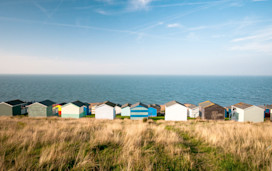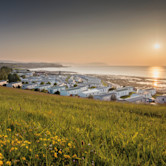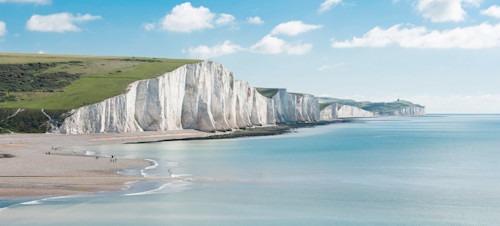
Things to do in Dover
Dover boasts perhaps the most beautiful and certainly the most iconic coastline in Britain. However, the town is also home to numerous attractions, mostly historic and cultural in nature, to add to its natural wonders.
Throughout the 20th-century, the White Cliffs of Dover became a symbol of hope and freedom, having been used for defence in both World Wars. The town is now perhaps best known as one of Europe’s busiest international ferry ports and the nearest port to France in the UK. While some might simply pass through the town on their way to other destinations in Kent and London, that would be to miss out on the many things to do in Dover itself. There’s more than enough for a full day out at Dover, so while it may be over an hour’s drive from our Kent Coast Holiday Park, it’s well worth it! Check out our list of the best things to do in Dover for more inspiration.
- 1. Stride along the White Cliffs of Dover
- 2. Explore Dover Castle
- 3. Try your hand at kayaking on Dover Beach
- 4. Discover maritime history at Dover Museum
- 5. Discover the 1,800-year-old time capsule of the Roman Painted House
- 6. Discover early 20th-century travel at Dover Transport Museum
- 7. Learn about the history of radio at South Foreland Lighthouse
- 8. Explore marine wildlife with a Dover sea safari
- How to get to Dover from us
1. Stride along the White Cliffs of Dover
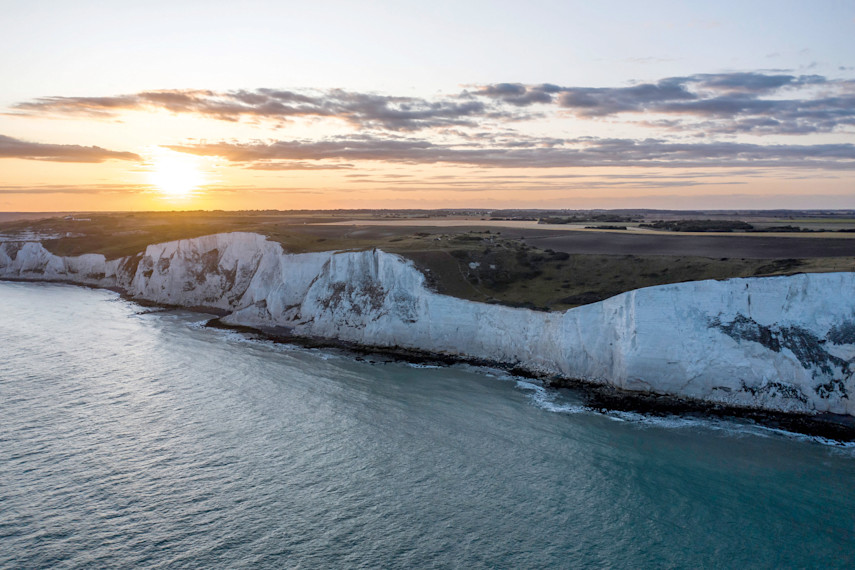
There are few greater sights than the beaming White Cliffs of Dover. The cliffs stretch for eight miles along both sides of the town, with a visitor's section purchased by the National Trust in 2016. The views from here are panoramic, magnificently encompassing the scale of the English Channel, with France’s northern coastline easily visible on a clear day. In the foreground, you’ll see the bustling Port of Dover, constantly ferrying people back and forth across this historic waterway.
You can park steps away, making this a great place for a picnic in the sun. You can tie in a walk along the cliffs with a visit to historic Dover Castle, also perched high up. Look out for helicopters too, with the coastguard’s helipad slightly raised above the walkway. As you explore, take in the symbolic value of a structure that for many represented freedoms during the darkest of times in the Second World War.
2. Explore Dover Castle
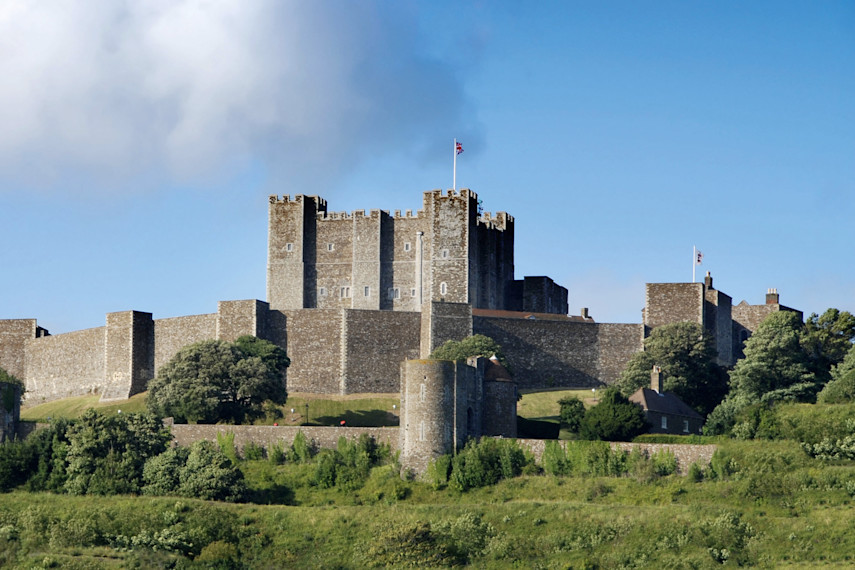
If the White Cliffs are Dover’s natural wonder, then the castle is its man-made one. The most impressive landmark in the town has now been commanding the gateway into the country for nine centuries since the reign of King Henry II. The fortress was originally built to conceal a weak point in the country’s defences and show off its power. Indeed, it’s no less impressive today and is undoubtedly one of the top things to do in Dover.
With historic highlights such as the secret wartime tunnels, its vast labyrinth interior and interesting facts relating to the Romans and the Cold War, it’s a great place to explore and learn more of Dover’s heritage. When you step inside this vivid medieval palace you can enjoy first-hand what it would have been like to take a seat on the king’s throne and meet characters from Henry II’s court. On summer weekends be sure to see the gun firing drills and explore the Battlements Walk in the sunshine, with wonderful views out towards The Channel.
3. Try your hand at kayaking on Dover Beach
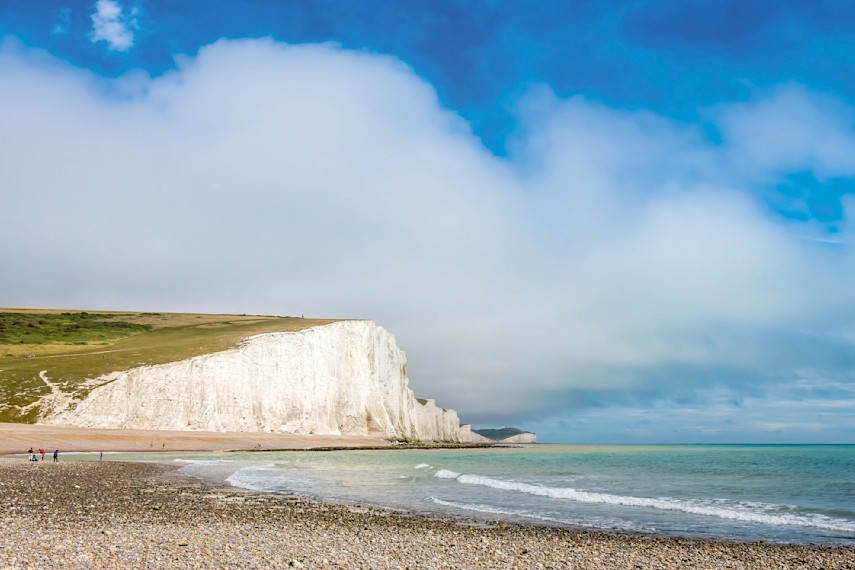
Dover Beach is a scenic stretch of pebbly beach tucked between the dominant White Cliffs of Dover. The beach is surrounded by harbours which are a year-round hive of activity. Tourists and locals alike join to enjoy the fresh sea air, fantastic views of the ferries and cruise ships coming and going, and water sports. There are also various vendors of refreshments, including seafood stalls and a range of excellent, competitively priced restaurants.
We recommend strolling along the esplanade to take in the view of Dover Castle up on the cliffs. On a clear day, the distant shoreline of France may even be visible. The beach and waters are surprisingly clean given their popularity and there’s plenty to do with swimming, body boarding and kayak hire all possibilities on fine weather days. For those with an interest in the lifeboats, there's also the RNLI station with their Severn class on display in the dock.
4. Discover maritime history at Dover Museum
Dover is famed as one of the most important ports in British history and this rich seafaring heritage is brought into light at the Dover Museum. The museum’s informative displays document the history of the local area with plenty of interesting or curious objects, left over from Roman, Saxon, and Tudor times, as well as those from the Second World War.
Immerse yourself in Dover’s past millennia with six scale models charting the town’s development, from its humble beginnings as a Stone Age farming community to its current form. Perhaps the centrepiece of the whole museum is the bronze age boat, discovered in September 1992, that’s thought to be some 3,500 years old. This is a must for all those with an interest in the history of maritime.
5. Discover the 1,800-year-old time capsule of the Roman Painted House
Built around 200 AD, the Roman Painted House of Dover once formed part of a large mansion used as accommodation by those braving the Channel crossing. This is probably the best-preserved Roman House in England, comprising some 50 individual structures and more still could be uncovered in the.
The house takes its name from its frescoes, including several unique painted walls, which are supposed to be the most extensive Roman paintings discovered north of the Alps. In total, 400 square feet of frescoes have survived the centuries with motifs relating to Bacchus, the Roman god of wine, as well as an elaborate under-floor heating system. As well as the many displays, there is a garden area available for you to use as a picnic spot.
6. Discover early 20th-century travel at Dover Transport Museum

The only transport museum in Kent is found in a charming building in Dover’s suburb of Whitfield. This one-of-a-kind museum has entertainment for kids and parents alike and is run by a team of friendly and knowledgeable volunteers.
Entering the building is like stepping into another era, as you are met by a 1924 Aveling & Porter steam roller, a 1929 Dennis GL charabanc (motorised precursor to a bus) and a curvy AEC Reliance coach dating from the late-50s. There are also more unusual pieces such as a genuine Romany wagon from around 1930, in addition to a collection of vintage cars. As with most attractions in Dover, the Transport Museum also nods to the World Wars with its exhibition showing off a prefab Anderson Shelter, which is fascinating and educational for kids studying war era Britain at school. The museum is open Wednesdays, weekends and bank holidays in summer, and only on Sundays in winter, so be sure to time your visit right.
7. Learn about the history of radio at South Foreland Lighthouse
If the actual Dover Castle didn’t fully satisfy you then the castle-like South Foreland Lighthouse is sure to. First lit in 1843, this whitewashed Victorian building near St Margaret’s Bay is now a National Trust monument.
However, South Foreland Lighthouse is more than just a pretty façade - in 1859 the lighthouse became the first in the world to use an electric light. Later, the tower was used as a radio station, receiving the first ever ship-to-shore message in 1898, and international transmission across the channel in 1899. While the light was turned off in 1988, you can head inside to learn about the building’s scientific heritage, as well as the Knott family, a long line of keepers who operated this signal. If you are in Dover and want a good walk along the White Cliffs, this makes for the perfect final stop on your journey.
8. Explore marine wildlife with a Dover sea safari
Check out those famous white cliffs up close and personal, while looking out for marine mammals including the lively, charming harbour seals. These tours are taken from a zippy RIB speedboat and can include groups of between 8 and 12 people. Kids aged 3 and over are welcome and lifejackets are provided.
Choose a White Cliffs tour from the Dover Marina, or a longer excursion that takes in Walmer, Deal Pier and Sandwich Bay. Combining boat ride thrills with scenic beauty, this is a great family option.
How to get to Dover from us
The iconic coastal location of Dover is around a 60-mile drive from our Kent Coast Holiday Park. As a result, it will require a little time on the road to get there, but it’s well worth the drive to see the spectacular sites listed above. Here’s how to get there:
Heading west out of Kent Coast, take 2 right turns to get onto Avery Way
Get on the M2 in Kent via the Ratcliffe Highway, A228 and A289
Follow the M2 and A2 to Whitfield Hill/A256 in Whitfield for about 45 miles
At Whitfield Roundabout, take the 4th exit onto Whitfield Hill/A256
Follow the A256 to your destination in Dover (about 3 miles)
Start planning your Great British break
Ownership offers in Kent
Important information
Terms and conditions
Pre-owned holiday homes from £19,995 – UPDATED 29 September 2025
*Holiday home price is based on a pre-owned holiday home and includes siting, connections and standard accessories.
Price excludes 2025 site fees, running costs and add-ons requested at point of sale. Subject to status and availability.
As at 29 September 2025, price is available at Kent Coast, Burnham-On-Sea, Berwick, Caister-on-Sea, Cala Gran, Cardigan View, Devon Cliffs, Greenacres, Hopton, Perran Sands and Seton Sands. Price can be withdrawn at any time.
Images are shown for representational purposes. Access to holiday home is subject to park opening times.
Park cannot be used as a permanent residence. Haven Leisure Ltd is registered in England (No. 01968698) and is a FCA appointed representative of Bourne Leisure Limited (t/a Haven). Bourne Leisure Ltd is registered in England (No. 04011660) and is authorised and regulated by the FCA (Financial Services Register No. 312847) as a credit broker and insurance distributor. Registered office: One Park Lane, Hemel Hempstead, Hertfordshire, HP2 4YL.
Let2offset - make no site fee payments until 2032
Let2offset is a contractual lettings product that offers eligible owners a guaranteed letting income at a preferential rate (calculated each year) in exchange for a stipulated number of letting breaks. It also allows eligible owners to pay their site fees and receive their letting income in 12 equal monthly instalments; the monthly site fee amount charged by Haven will be after deduction of the letting income.
‘Make no site fee payments until 2032 when using Let2offset’ is available at 33 Haven parks excluding Burnham, Cardigan View, Far Grange, Garreg Wen, Lydstep Beach, Riviere Sands and Seaview. The letting income received will vary by make, model and location. The monthly site fee payment does not include running costs e.g. utilities, rates & insurance.
“Make no site fee payments until 2032 when using Let2offset” is applicable to new and existing customer purchases of new Victory Ashberry 3 Bed or equivalent grade holiday home purchases made through Haven where customers have also signed up to Haven’s Let2offset contract. It is not applicable to private sales and cannot be used in conjunction with our free Site Fee promotion. An example of how “Make no site fee payments until 2032 when using Let2offset” operates under Let2offset is the purchase of a Victory Ashberry 3 Bed holiday home at Seton Sands with a monthly site fee of £667.08 (includes purchasing discount of £17.08) and monthly letting income of £673.17. The monthly difference equates to £23.17, which will be credited to the owner's account. Both letting income and site fees are subject to yearly pricing reviews and inflation. The monthly site fee costs and letting income shown in the example are based on 2025 figures. Modelled assumptions on expected annual site fee and letting income charges over the 7-year lettable life of the Victory Ashberry 3 Bed indicate that under Let2offset it is anticipated that these customers will continue to receive a monthly credit during this period, however, this is not guaranteed. The modelled assumptions are based on the historical performance of Haven over the past 5 years of trading as of 2024. Images are shown for representational purposes. Access to holiday home is subject to park opening times. Park cannot be used as a permanent residence. Haven Leisure Ltd is registered in England (No. 01968698) and is a FCA appointed representative of Bourne Leisure Limited (t/a Haven). Bourne Leisure Ltd is registered in England (No. 04011660) and is authorised and regulated by the FCA (Financial Services Register No. 312847) as a credit broker and insurance distributor. Registered office: One Park Lane, Hemel Hempstead, Hertfordshire, HP2 4YL.
New holiday homes from £34,995 – UPDATED 29 September 2025
*Holiday home price is based on a pre-owned holiday home and includes siting, connections and standard accessories.
Price excludes 2025 site fees, running costs and add-ons requested at point of sale. Subject to status and availability.
As at 29 September 2025, price is available at Kent Coast, Burnham-On-Sea, Berwick, Caister-on-Sea, Cala Gran, Cardigan View, Devon Cliffs, Greenacres, Hopton, Perran Sands and Seton Sands. Price can be withdrawn at any time.
Images are shown for representational purposes. Access to holiday home is subject to park opening times.
Park cannot be used as a permanent residence. Haven Leisure Ltd is registered in England (No. 01968698) and is a FCA appointed representative of Bourne Leisure Limited (t/a Haven). Bourne Leisure Ltd is registered in England (No. 04011660) and is authorised and regulated by the FCA (Financial Services Register No. 312847) as a credit broker and insurance distributor. Registered office: One Park Lane, Hemel Hempstead, Hertfordshire, HP2 4YL.
Move your caravan to Haven for free - full terms and conditions
This offer is available for holiday home owners not located at a Haven park and that want to relocate their holiday home from their current holiday park a Haven holiday park, subject to pitch availability and the satisfactory completion of our standard onboarding checks. It cannot be used in conjunction with any other offer, discount or promotion, apart from the free 2026 site fee promotion if applicable to the Haven park. Haven reserves the right to withdraw this offer at any time without notice.
In order to be eligible to participate in the offer, your holiday home must be situated within a 50-mile radius of the Haven park that you wish to relocate to. The holiday home must be no more than 15 years old from the date of manufacture and if it has been purchased under a finance agreement, the holiday homeowner must provide confirmation from their lender that the holiday home can be moved to the Haven park.
Haven will transport your holiday home from the entrance of its current holiday park location to the required Haven park and will reimburse your transportation costs up-to a maximum value of £750; any excess must be paid by the holiday homeowner. Haven does not accept any responsibility for any damage that happens to the interior of your holiday home whilst it is being transported to one of our holiday parks. We recommend your holiday home is fully packed down and ready for transportation. Transportation does not include decking. Any decking bought onto a Haven park must be approved by the General Manager of that park to ensure it meets Haven standards. Siting and connection costs for your holiday home on a Haven park will be paid for by Haven. Offer excludes payment of holiday home disconnection at your current park and transportation costs from its current pitch to the entrance of its current park.
Subject to availability and status. Deposit required. Offer cannot be combined with any other offer, discount, or promotion. Access to your holiday home is subject to park opening times. Images are shown for representational purposes. Park cannot be used as a permanent residence.
Haven Leisure Ltd is registered in England (No. 01968698) and is a FCA appointed representative of Bourne Leisure Limited (t/a Haven). Bourne Leisure Ltd is registered in England (No. 04011660) and is authorised and regulated by the FCA (Financial Services Register No. 312847) as a credit broker and insurance distributor. Registered office: One Park Lane, Hemel Hempstead, Hertfordshire, HP2 4YL.



